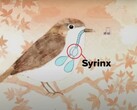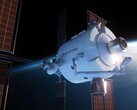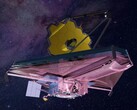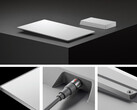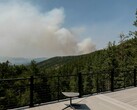The International Space Station (ISS) orbits Earth at an altitude of about 250 miles and travels at roughly 17,500 miles per hour. Positioned in low Earth orbit, it circles the planet approximately every 90 minutes. But what would happen if you launched a paper airplane from there? Scientists Maximilien Berthet and Kojiro Suzuki from the University of Tokyo set out to answer this – though not through an actual launch, but with detailed simulations and hypersonic wind tunnel experiments. Their findings were published on July 3, 2025, in the journal Acta Astronautica.
Beyond flight stability and heat resistance, the study also explored potential applications in space missions – such as biodegradable braking sails or tools for atmospheric research. Central to the research was a coupled orbit-attitude-aerodynamics simulator, which modeled the full flight path from release to re-entry. The simulation accounted for Earth's gravity, air resistance, rotational dynamics and heat buildup during descent.
To verify the simulation, the team tested a scaled-down model (1:3) with a paper nose and aluminum tail in a hypersonic wind tunnel at Mach 7, where temperatures reached up to 650 Kelvin (about 801°F). The simulation showed that the paper airplane initially remained stable, flying at the ISS’s speed of about 17,500 mph. Tumbling only began around 75 miles above Earth. At that point, the nose and wing edges showed signs of charring but were not completely destroyed. The tip of the nose bent noticeably – yet partly regained its shape. However, the airplane never reached the ground, as it burned up between 56 and 68 miles due to intense re-entry heat. What may seem like a playful experiment has actually revealed insights that could benefit future space missions.
Sustainable ideas for space travel
The authors see ultra-light origami structures made of paper as a sustainable alternative to traditional materials like Mylar or Kapton. Biodegradable braking sails for small satellites or lightweight experiments for measuring air density in the upper atmosphere could become viable. These paper-based devices might also serve as low-cost carriers for thin-film technologies or as engaging educational tools. While paper isn’t made of pure cellulose – it also contains mineral fillers like kaolin, which must be factored into its environmental impact – the underlying concept remains compelling: simple, stable structures can be built to withstand atmospheric re-entry, at least for a limited time.





